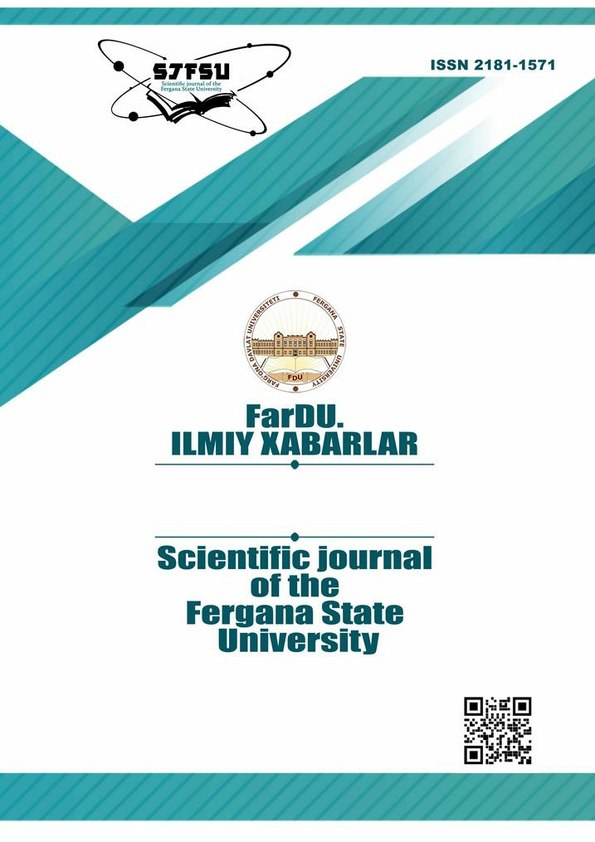АНАЛИЗ АССОЦИАТИВНОГО ПОЛЯ ХУДОЖЕСТВЕННОГО ТЕКСТА (На примере рассказа Назара Эшанкула)
Keywords:
anthropocentric linguistics, associative linguistics, stimulus word, association, associative field, field core, literary text, linguistic factors, extralinguistic factors.Abstract
In the article, the verbal associative units in the creation of a literary text are interpreted from an anthropocentric point of view on the example of Nazar Eshanqul’s story. Linguopoetic, associative, analytical and synthesis analysis methods were used throughout the article. The interrelationships between the linguistic picture of the world and the verbal associations in creative artistic thinking are analyzed to create an associative space for the literary text.
References
Iskandarova Sh. O‘zbek tili leksikasini mazmuniy maydon sifatida o‘rganish (shaxs mikromaydoni): Filo. fan. dok. … diss. avtoref. –T.: 1999. –B 43 (Iskanderova Sh. Studying the lexicon of the Uzbek language as a meaningful field (personal microfield): Filo. science. doc. ... diss. autoref. -T.: 1999. –P 43)
Lutfullayeva D. Assotsiativ tilshunoslik nazariyasi. Monografiya –T.: Meriyus, 2017. (D.E.Lutfullayeva. Theory of associative linguistics. Monograph –T.: Meriyus, 2017)
Xudoyberganova D. O‘zbek tilidagi badiiy matnlarning antroposentrik talqini: Filol.fan. dok. Diss. –T.: O‘z RFATAI. 2015. –B 101(Khudoiberganova D. Anthropocentric interpretation of literary texts in Uzbek language: Philology. doc. Diss. – T.: Own RFATAI. 2015. –P 101)
Eshonqul N. Maymun yetaklagan odam. –T.: Yangi nashr, 2019. (Eshanqul N. The man led by the monkey. –T.: New edition, 2019)
Downloads
Published
Issue
Section
License
Copyright (c) 2023 Fergana State University

This work is licensed under a Creative Commons Attribution-NonCommercial-NoDerivatives 4.0 International License.

